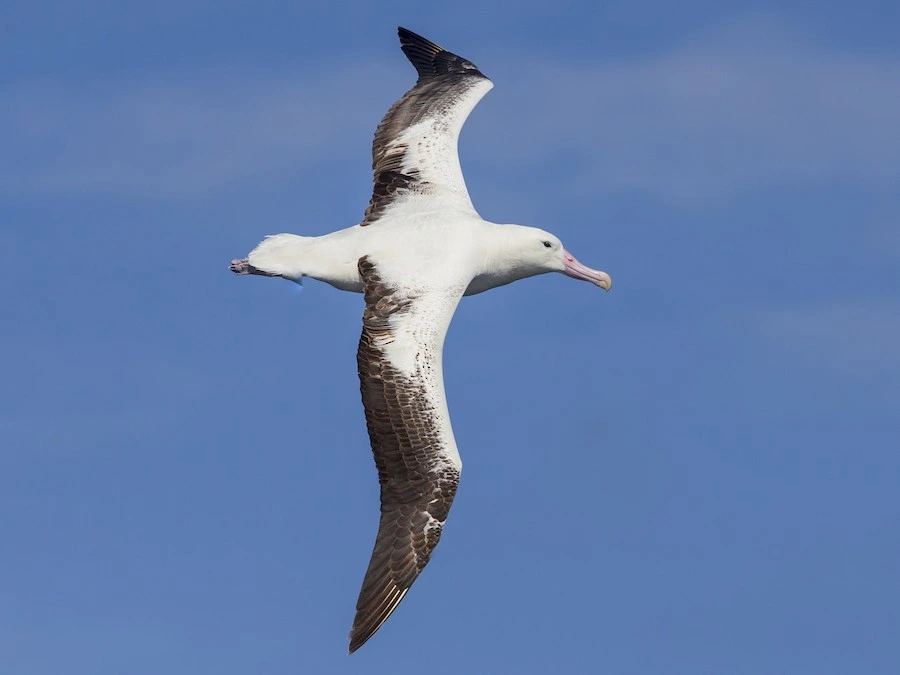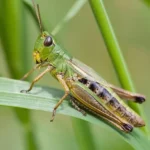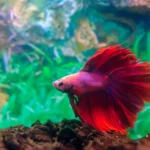
Welcome to our exploration of one of the most fascinating birds of the ocean—the albatross! Known for their incredible wingspan and remarkable flying abilities, albatrosses are not just a sight to behold; they are also creatures steeped in intriguing behaviors and unique adaptations. In this blog, we’ll dive into 25 captivating facts about these majestic seabirds, uncovering everything from their impressive migratory patterns to their role in marine ecosystems. Whether you’re a birdwatcher, a nature enthusiast, or simply curious about wildlife, you’re sure to find something that piques your interest. Let’s take flight and discover the wonders of the albatross!
Family Diomedeidae: Albatrosses belong to the family Diomedeidae, which encompasses a group of large seabirds. This family is characterized by their long wings and strong flying abilities. Albatrosses are closely related to other seabirds like petrels and shearwaters. The Diomedeidae family is divided into two genera: Diomedea, which includes the larger species like the wandering albatross, and Phoebastria, which includes the smaller species found primarily in the North Pacific.
22 Species: There are 22 recognized species of albatrosses, each with unique characteristics and habitats. These species are categorized into three groups: the great albatrosses, the medium-sized albatrosses, and the light-mantled albatrosses. Some of the most well-known species include the wandering albatross, the black-browed albatross, and the Laysan albatross. Each species has adapted to specific oceanic environments, influencing their feeding habits and breeding behaviors.
Wingspan of the Wandering Albatross: The wandering albatross (Diomedea exulans) is renowned for having the largest wingspan of any living bird, which can reach up to 12 feet (3.6 meters). This impressive wingspan allows the bird to glide effortlessly over the ocean, covering vast distances with minimal energy expenditure. The wings are specially adapted for dynamic soaring, enabling the albatross to take advantage of wind currents and maintain altitude without flapping its wings.
Flight Mechanics: Albatrosses can fly for hours without flapping their wings, utilizing a technique known as dynamic soaring. This method involves soaring into the wind and then diving downwind, gaining speed and altitude without expending much energy. By exploiting the wind gradients over the ocean’s surface, albatrosses can travel thousands of miles across open waters, making them some of the most efficient flyers in the avian world.
Longevity: Albatrosses are known for their impressive longevity, with some individuals living for over 50 years. The oldest recorded wandering albatross was 68 years old, demonstrating their ability to thrive in the wild for extended periods. This longevity is attributed to their slow maturation process, as albatrosses typically do not reach breeding age until they are around 5 to 15 years old, depending on the species.
Habitat: Albatrosses are primarily found in the Southern Ocean and the North Pacific, where they roam vast areas of open water. These regions provide ample food sources, such as squid and fish, which are essential for their survival. Albatrosses are highly migratory, often traveling thousands of miles between breeding and feeding grounds. Their habitat preferences are closely linked to oceanic currents and the availability of prey.
Life at Sea: Albatrosses spend most of their lives at sea, coming to land only to breed. Their oceanic lifestyle is characterized by long periods of foraging and traveling, often covering vast distances in search of food. When breeding, they return to specific islands or coastal regions where they establish nesting colonies. This reliance on the open ocean makes them particularly vulnerable to changes in marine ecosystems.
Monogamous Mating: Albatrosses are known for their strong pair bonds, often forming monogamous relationships that can last for life. Once they select a mate, they engage in elaborate courtship displays that include synchronized flying and intricate dance-like movements. This bond is crucial for raising their young, as both parents share responsibilities in incubating the eggs and feeding the chicks.
Courtship Displays: The courtship displays of albatrosses are among the most elaborate in the bird world. These displays often involve a series of aerial acrobatics, vocalizations, and physical interactions, which help strengthen the bond between mates. The dances can include bowing, head shaking, and mutual preening, all of which play a vital role in mate selection and the establishment of a long-term partnership.
Keen Sense of Smell: Albatrosses possess a highly developed sense of smell, which is crucial for locating food in the vast ocean. Unlike many birds that rely primarily on vision, albatrosses can detect the scent of prey, such as squid and fish, from significant distances. This ability is particularly advantageous in the open ocean, where food sources can be sparse and widely dispersed.
Feeding Habits: Albatrosses primarily feed on squid, fish, and crustaceans, which they catch while gliding over the ocean’s surface. Their diet can vary based on the species and the availability of prey in their habitat. Albatrosses have been observed engaging in surface feeding, where they dip their beaks into the water to catch prey, as well as scavenging behind fishing boats for discarded fish. Their foraging strategy is highly efficient, allowing them to cover large areas while searching for food.
Food Consumption: Albatrosses have the ability to consume large amounts of food at once, sometimes up to 2.5 kg (about 5.5 lbs). This capability is essential for their energy needs, especially during long flights and breeding seasons. After foraging, they may return to their nests to regurgitate food for their chicks. This regurgitation process is vital for chick development, as the parents provide nutrient-rich meals to support their growth.
Incubation Period: The incubation period for albatross eggs ranges from 11 to 13 weeks, depending on the species. During this time, both parents take turns incubating the egg to maintain the necessary temperature for development. The prolonged incubation period is a reflection of the albatross’s reproductive strategy, as they typically lay only one egg every two years. This slow reproductive cycle is necessary to ensure the survival of the chick, which requires significant parental care after hatching.
Chick Dependency: Albatross chicks take several months to fledge, typically remaining dependent on their parents for up to a year. After hatching, the chicks are initially fed regurgitated food by their parents and require constant care and protection. As they grow, they begin to exercise their wings and learn to fly. Once they fledge, they still rely on their parents for food and guidance as they adapt to life at sea, making this extended dependency period crucial for their survival.
Population of Black-browed Albatross: The black-browed albatross (Thalassarche melanophris) is one of the most numerous albatross species, with an estimated population of over 2 million individuals. This species is known for its distinctive black eyebrows and striking plumage. The large population size is indicative of successful breeding and foraging strategies, but it also underscores the importance of monitoring and protecting their breeding colonies, particularly in the face of environmental changes and human activities.
Salt Excretion Gland: Albatrosses have a specialized gland above their eyes that helps excrete excess salt from seawater. This adaptation is crucial for their survival in marine environments, as they often ingest saltwater while feeding. The gland filters out the salt, which is then expelled through their nostrils, allowing them to maintain proper hydration levels. This physiological adaptation is essential for their long-distance flights over the ocean.
Long-Distance Flights: Albatrosses are renowned for their ability to undertake long-distance flights, sometimes covering thousands of miles in a single journey. Their migratory patterns can vary significantly among species, with some traveling from breeding grounds in the Southern Hemisphere to feeding areas in the North Pacific. This remarkable endurance is facilitated by their aerodynamic body shape and energy-efficient flying techniques, allowing them to traverse vast oceanic expanses in search of food.
Unihemispheric Slow-Wave Sleep: Albatrosses can sleep while flying, utilizing a technique called unihemispheric slow-wave sleep. This adaptation allows one hemisphere of their brain to rest while the other remains alert to environmental cues. This capability is particularly advantageous during long flights, enabling them to maintain awareness of their surroundings and avoid potential dangers, such as other birds or ships, while still getting the necessary rest.
Etymology of “Albatross”: The name “albatross” is believed to have originated from the Arabic word “al-gattas,” meaning “the diver.” This term reflects the bird’s proficiency in foraging for food in the ocean. The name has evolved through various languages and cultures, ultimately becoming widely recognized in English. Albatrosses have long been associated with maritime folklore, symbolizing both good luck and, in some literary contexts, a burden.
Wingspan-to-Body Ratio: Albatrosses have a wingspan-to-body ratio that makes them highly efficient flyers. Their long, narrow wings are designed for soaring, allowing them to glide over the ocean with minimal energy expenditure. This adaptation is crucial for their lifestyle, as they often travel great distances in search of food. The wingspan-to-body ratio also enables them to take advantage of wind currents, allowing them to maintain altitude and speed without the need for constant flapping. This efficiency is a key factor in their ability to cover vast oceanic distances, making them some of the most proficient long-distance flyers among birds. Their wing structure is specifically adapted for this purpose, providing the necessary lift and stability during flight.
Laysan Albatross Appearance: The Laysan albatross (Phoebastria immutabilis) is known for its distinctive black and white plumage, which makes it one of the most striking species of albatross. Adult Laysan albatrosses have a white body with dark brown wings and a black cap on their head, giving them a bold appearance. They also have a characteristic light-colored bill that is hooked at the end, adapted for catching fish and squid. This species is primarily found in the North Pacific and is known for its unique nesting habits on remote islands.
Vulnerable Threats: Albatrosses face several threats that have led to declines in their populations. Habitat loss due to human activities, such as development and pollution, poses significant risks to their breeding grounds. Additionally, fishing bycatch is a major concern, as albatrosses can become accidentally caught on fishing lines and hooks. Climate change also impacts their food sources and breeding success, making conservation efforts essential to protect these magnificent seabirds and their habitats.
Following Fishing Boats: Albatrosses are often seen following fishing boats, taking advantage of the discarded fish and offal thrown overboard. This behavior showcases their adaptability and opportunistic feeding habits. By trailing boats, they can easily locate food sources without expending energy searching for prey in the open ocean. This scavenging behavior is vital for their survival, especially in areas where natural food sources may be limited due to environmental changes or overfishing.
Maritime Folklore: The albatross is a symbol of good luck in maritime folklore, often regarded as a positive omen for sailors. This belief stems from their ability to travel vast distances over the ocean, suggesting a connection to favorable winds and safe passage. However, in literature, particularly in Samuel Taylor Coleridge’s poem “The Rime of the Ancient Mariner,” the albatross also represents a burden or a curse when it is killed by the mariner, reflecting the complex relationship between humans and nature. This duality in symbolism highlights the albatross’s significance in both cultural and ecological contexts.
Conservation Efforts: Conservation efforts are in place to protect albatross populations from the various threats they face. These efforts include regulations on fishing practices to reduce bycatch, habitat protection initiatives, and public awareness campaigns to promote the importance of albatrosses in marine ecosystems. Organizations and governments work together to monitor populations and implement strategies that ensure the survival of these remarkable birds. Successful conservation measures are crucial for maintaining the biodiversity of oceanic environments and ensuring that future generations can appreciate the beauty and significance of albatrosses.
Frequently Asked Questions About Albatrosses
What is an albatross?
Albatrosses are large seabirds belonging to the family Diomedeidae. They are renowned for their impressive wingspans, which can reach up to 11 feet in the case of the Wandering Albatross. These magnificent birds are found primarily in the Southern Hemisphere, though some species inhabit the North Pacific.
How long can albatrosses live?
Albatrosses are known for their longevity. Some species, like the Wandering Albatross, can live for over 50 years. Their long lifespan is attributed to their efficient flight and their ability to exploit abundant food sources in the Southern Ocean.
What do albatrosses eat?
Albatrosses are carnivorous and primarily feed on fish, squid, and krill. They are skilled hunters, using their excellent eyesight to spot prey from great distances. They often follow fishing boats, taking advantage of discarded fish and other marine debris.
Where do albatrosses nest?
Albatrosses are highly migratory birds that spend most of their lives at sea. However, they return to land to breed. They typically nest on remote islands, often forming large colonies. These islands provide a safe haven for their chicks, away from predators.
Why are albatrosses endangered?
Many albatross species are threatened by human activities. One of the biggest threats is accidental capture in longline fishing gear. Albatrosses are attracted to the bait on fishing lines and can become entangled, leading to drowning. Other threats include habitat loss, pollution, and climate change.
How can we help protect albatrosses?
There are several ways to help protect albatrosses:
- Support sustainable fishing practices: Choose seafood that is sustainably sourced and avoid products from fisheries that use harmful fishing methods.
- Reduce plastic pollution: Reduce your plastic consumption and properly dispose of plastic waste.
- Donate to conservation organizations: Support organizations working to protect albatrosses and their habitats.
- Volunteer: Volunteer your time to participate in beach clean-ups or other conservation efforts.
What does it mean to be called an albatross?
The term “albatross” carries several layers of meaning, stemming from both the bird itself and its symbolic representation in literature. Here’s a breakdown:
- Literal Meaning:
- An albatross is a large seabird with long, narrow wings, known for its impressive gliding flight. They are primarily found in the Southern Ocean.
- Figurative Meaning:
- The most common figurative meaning of “albatross” is a heavy burden, obstacle, or source of guilt. This originates from Samuel Taylor Coleridge’s poem “The Rime of the Ancient Mariner,” where a sailor kills an albatross and is then forced to wear its carcass around his neck as punishment. So to be called an albatross, is to be called a burden.
- It can also refer to something that hinders progress or causes persistent anxiety.
Can an albatross fly for years without landing?
Albatrosses are known for their incredible ability to stay aloft for extended periods. They can travel vast distances over the ocean, using wind currents to glide with minimal effort. While they don’t literally fly for “years” without ever landing, they can spend very long periods at sea, only coming ashore to breed. They are extremely well adapted to a life on the wing.
What does albatross symbolize?
- Burden and Guilt: As mentioned, the albatross symbolizes a heavy burden, often associated with guilt or remorse.
- Bad Omen: Due to “The Rime of the Ancient Mariner” it can be a symbol of a bad omen.
- Freedom and Endurance: Ironically, the albatross also symbolizes freedom and endurance due to its ability to fly vast distances over the open ocean.
What is the literary meaning of the albatross?
In literature, the albatross is most strongly associated with Coleridge’s poem. It represents the consequences of one’s actions, the weight of guilt, and the disruption of the natural order. Also in Charles Baudelaire’s poem “L’Albatros” the albatross symbolizes the poet. In that poem, the albatross when on the deck of a ship is clumsy and mocked, which is how Baudelaire felt poets were treated by common society.








